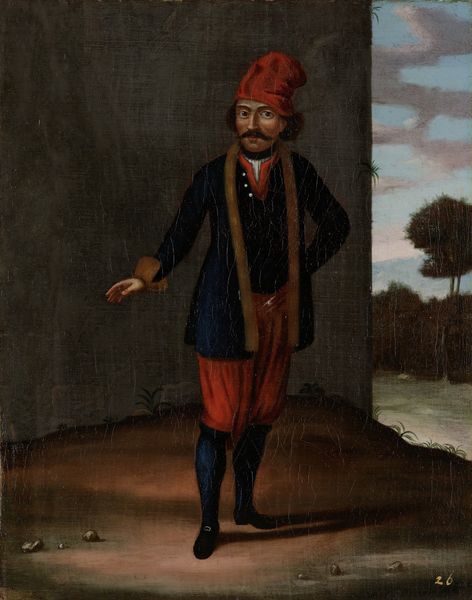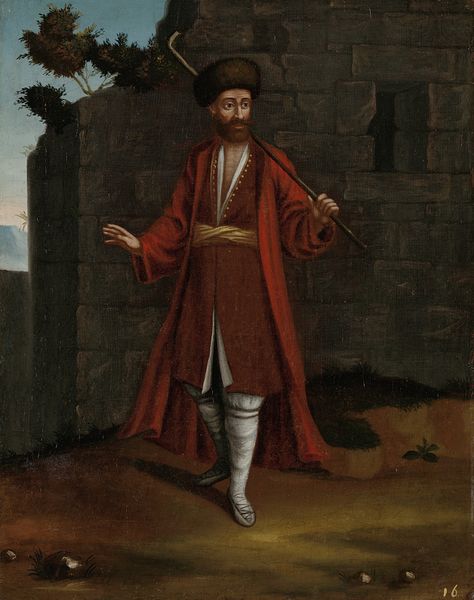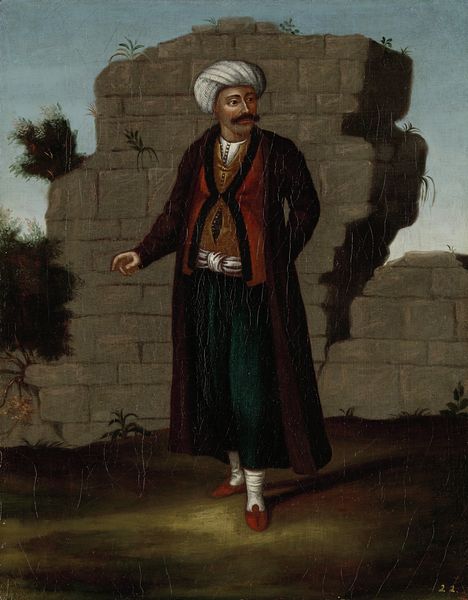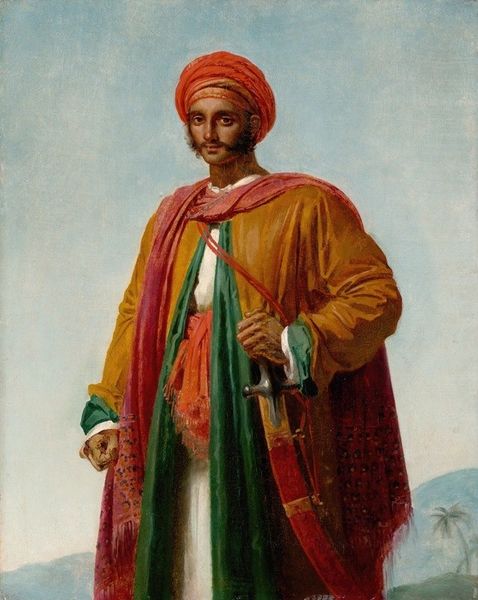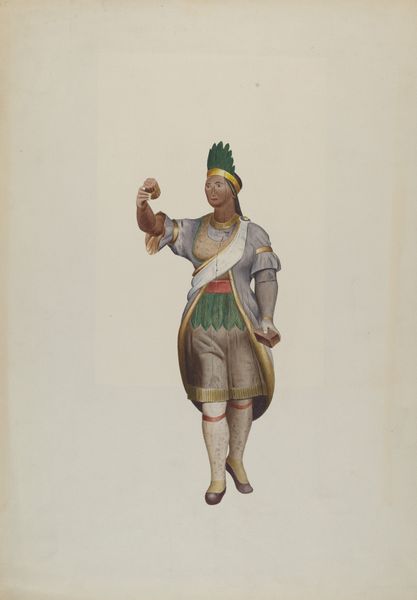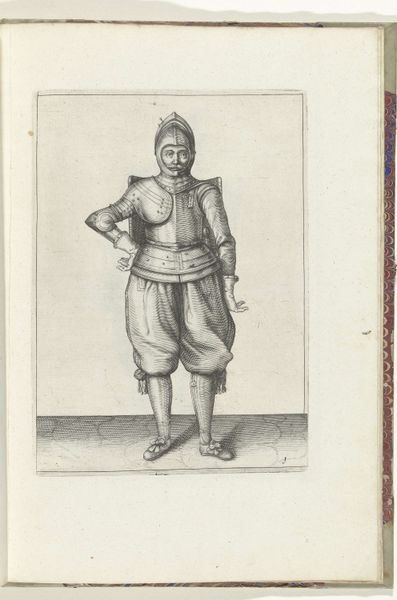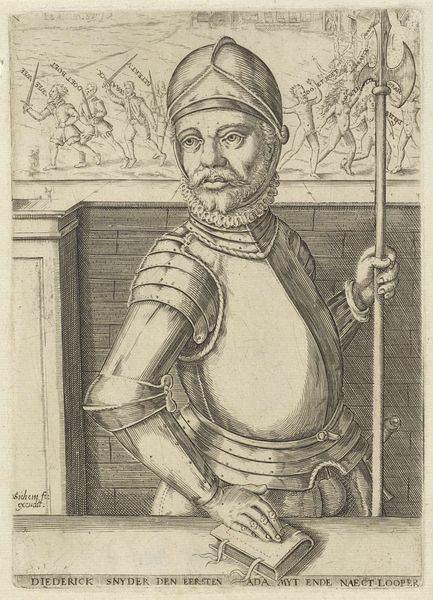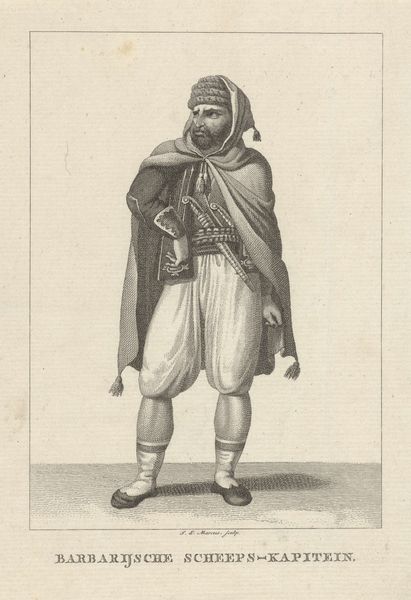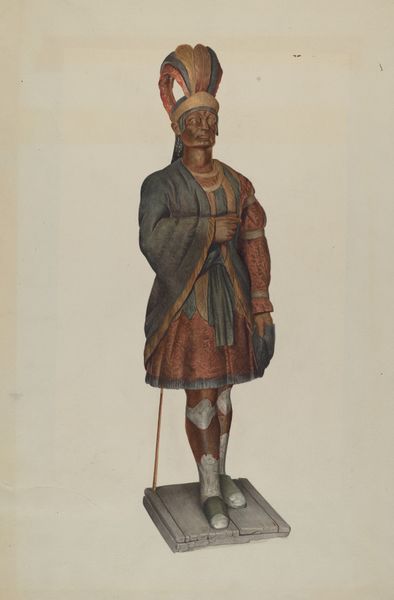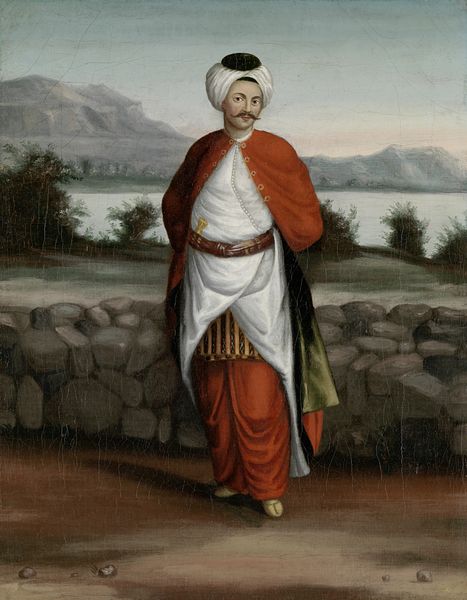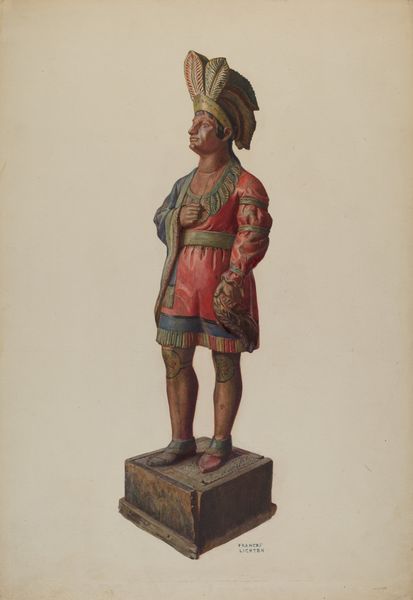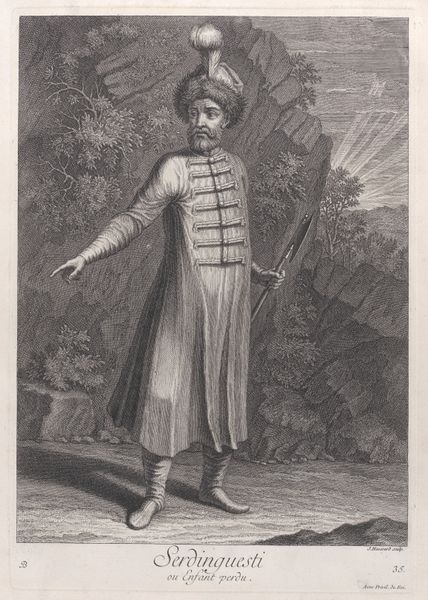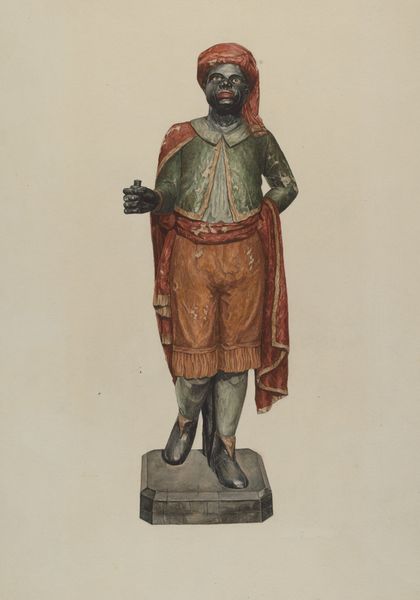
painting, oil-paint
#
portrait
#
baroque
#
painting
#
oil-paint
#
genre-painting
Dimensions: height 39.5 cm, width 31 cm
Copyright: Rijks Museum: Open Domain
Curator: Standing before us, we have a rather compelling portrait titled "Man from the Island of Tinos," rendered in oil paint by Jean Baptiste Vanmour sometime between 1700 and 1737. Editor: My eye immediately goes to the contrast. The vivid reds and greens against that rather drab, stony backdrop. It feels both exotic and confined. Curator: The portrait gains considerable meaning when we place it within the context of Vanmour's career. As a painter for the Ottoman court, his work served as a visual bridge between Europe and the East. These images of individuals documented the diverse populations encountered within the empire. Editor: Exactly! And that clothing, while likely accurate, reads to the European eye as exotic and indicative of a specific identity. The red cap, the sash – these aren't just clothes; they are visual signifiers of a place, a role, perhaps even a set of values to those looking at the canvas. It speaks of cultural identity through vibrant iconography. Curator: It is a record of cultural encounter, for sure. But I wonder, does the representation unintentionally reinforce pre-existing ideas or power dynamics within Europe’s view of the East? Genre paintings often walked this delicate line, didn’t they? Editor: They certainly did. But the very fact that such details were deemed important enough to capture demonstrates the European fascination with understanding the people within these different cultures through symbolic elements. Each article of clothing, each color choice held layers of meaning. Think about what red meant, and how that conical hat would appear. Curator: So we're considering how European visual strategies helped categorize Ottoman society. In effect, art becomes a subtle political tool, shaping the perception of "the other." Editor: And we’re reminded that objects possess symbolic weight far beyond their material form. Even in a seemingly straightforward portrait, stories about cultural exchange, power, and identity become visually encoded, shaping our understanding across centuries. A powerful statement even today.
Comments
No comments
Be the first to comment and join the conversation on the ultimate creative platform.
